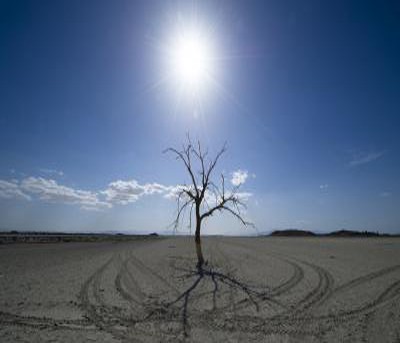
San Francisco, Drought-stricken California has announced a new water strategy to adapt to hotter, drier conditions, as officials believe extreme weather could diminish water supply by up to 10 per cent by 2040 in the most populous US state.
To replace and replenish what the state will lose to thirstier soils, vegetation, and the atmosphere, California Governor Gavin Newsom unveiled the actions to increase water supply and adapt to more extreme weather patterns, reports Xinhua news agency.
The actions, outlined in a strategy document, calls for investing in new sources of water supply, accelerating projects and modernizing how the state manages water through new technology.
Newsom's announcement followed $8 billion in state investments over the last two years to help store, recycle, de-salt and conserve the water it will need to keep up with the increasing pace of climate change, generating enough water in the future for more than 8.4 million households by 2040, according to a statement from the Governor's office.
"To help make up for the water supplies California could lose over the next two decades, the strategy prioritizes actions to capture, recycle, de-salt and conserve more water," it noted.
"The best science tells us that we need to act now to adapt to California's water future. Climate change means drought won't just stick around for two years at a time like it historically has extreme weather is a permanent fixture here in the American West and California will adapt to this new reality," Newsom was quoted as saying in the statement.
According to the statewide survey "Californians and the Environment" published last month by the Public Policy Institute of California, a nonprofit, nonpartisan think tank, Californians are most likely to name water supply and drought, followed by wildfires and climate change, as the most important environmental issue facing the state today.
The survey showed that 68 per cent of Californians say the supply of water is a big problem in their part of the state, while strong majorities feel that neither the state and local government nor people are doing enough in response to the drought.
Droughts in the US West have led water levels in many major lakes to drop dramatically.
Shasta Lake, the largest reservoir in California, was reportedly at less than half of where it usually should be in early May.
The megadrought that has gripped the southwestern US for the past 22 years is the worst in at least 1,200 years.


.jpeg)

